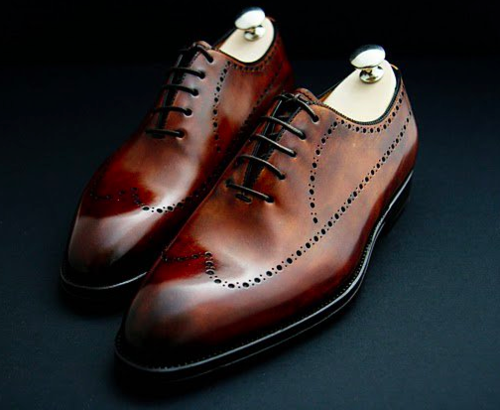 |
| Bontoni shoes, Picture Courtesy of Style Buff |
Throughout my time in the shoe industry, I have always been plagued by the most subjective question in the world: “How long will these shoes last?” In all honesty, I really hate that question and to be quite blunt, I feel that the people who ask it are truly lacking in common sense. How am I supposed to know how long your shoes are going to last? How is anyone supposed to know?� There are 5 trillion factors that will be taken into account when trying to even give a rough estimate. For example, where you live, what the weather is like where you live, how often you wear your shoes, do you use shoe trees, do you rotate your shoes etc. etc. I could go on and on and on with a million and one questions that I could ask to even begin to give a rougher-than-sandpaper estimate to how long your shoes will last. But even if I do my absolute best to tell you that they will last at least one year, you could wear them in the rain the next day, soak the sole leather, not use shoe trees to absorb the water and step on something sharp that then creates a tear in your sole and thus having you needing to replace it…. They could be John Lobb shoes, and you will wonder why your �1000 ($1600) shoes did not last long. But it was not their fault, it was yours!
Now, what brings this on (even though I should have written about it a long time ago) was the fact that a reader emailed me asking a justified question about shoes that we both own and his concern for their longevity and it made me want to provide knowledge to the masses about the truth to your shoes estimated life span. I feel that many people are misinformed to what buying an expensive shoe means. In no way is this in response to my reader (as his question was very valid and justifiable), but a chance to hopefully give people a better idea of what it means to own good shoes, care for them and the assurance of them lasting the amount of time that you would like them to.
| Too much beer, not enough conditioner |
The Shoes Upper
The shoes upper is by far the most important part of the shoe. Once this is gone, the shoe is no longer salvageable. Think of the leather on the upper as your own skin, only that it is no longer alive and does not have a body to take care of it naturally. You, the owner, replace that ever-working body, and are thus responsible for the maintenance and upkeep of the skin. Now there are many ways to do this. Naturally, you will want to think of the things that your leather does not like, for example water, wine, beer (especially — I know!!) or any liquid for that matter, dirt, food etc. You need to make sure that you can hopefully limit the amount of times that your upper leather has to make an encounter with these things, because the less able you are to do that, the less likely that your upper leather will last long. Now obviously you go through life and do many things and it makes no sense to tip toe around on your nice shoes hoping to never ruin them, but there are precautions that you can take, such as checking the weather and having galoshes to be prepared, not wearing them to the pub when you know that you are going to get drunk or always using the sidewalk (pavement) instead of walking on grass or dirt etc. These are all common sense type things that I believe many people forget to think about but then are so mystified when they ruin their shoes quickly.
Now outside of being observant to your surroundings, there are several things that you need to maintain your leather. Those things are: a good leather conditioner (like the one that I sell), some good wax polish, a nice and soft horse hair brush, shoetrees, dust bags, some nylon (women’s tights) and ideally the box that the shoes came in. With the proper use of these things (and taking into account the paragraph above), the life of your shoes could increase ten fold. The most important things, in my opinion, out of that entire list, would be the conditioner and the shoetrees. Both of them act as deterrents to things that destroy your leather e.g. liquid of any kind (even sweat) and drying out your leather. So, if you can’t have them all, at least have these two.
The Sole of the Shoe
The sole of your shoe is also very important as it meets face to face with the concrete for each and every step that you take. But remember, the sole is made out of leather, not rock and due to that, it is by no means indestructible!!! But that does not mean that it should crap-out any time soon after purchase either. But like I said, this will always vary depending on how you are with your shoes. Let’s take me for example. I am a very hard walker. Even though I have around 100 shoes (40 dress), the heel and toe (especially) regions of the sole get worn down very very fast. This is why I, more often than not, need to put on toe taps (blakies) as a way to ensure that I do not need to replace the sole, when it still has tons of life left. I know this about myself and therefore know that I need to do something to prevent a premature replacement of materials. And it does not matter what shoe it is, I will wear those toes down like no tomorrow. It could be G&G shoes, a bespoke one or even some cheapo and that leather won’t stand a chance, no matter how high quality it is. It’s an annoying problem no doubt, but it won’t change. So that being, you need to figure out more about the way that you walk and how hard you are on your shoes, to ensure that you will properly maintain their life span.
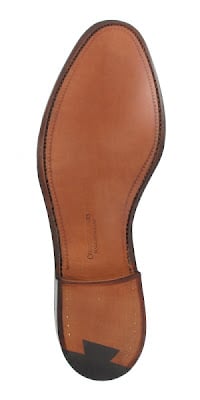 |
| Open Channel |
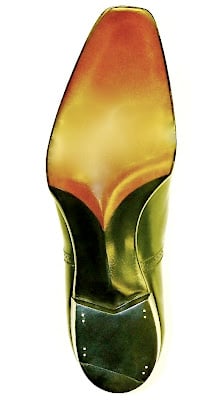 |
| Closed Channel |
Another thing is that fancy decoration will usually bring on easy ruin. For example, there are two ways that you can have your goodyear welted shoes appearing on the sole: with the stitch showing or not. These are referred as open and closed channel stitching. To get a better idea see the pictures. Now, there is plus and minus for both. But for the sake of time, let’s just look at the closed channel stitching. Now this is where you don’t see the stitching on the bottom of the sole. It leaves a very clean look and is more often than not shown on higher-end shoes. So, the positive is that it looks good, but the negative is that it creates a weak spot on the outer edges of the soles’ leather. Why you ask? Well, when creating a closed channel stitch, you have to cut (very finely – see picture below) into the side of the sole to open it up and create the channel. The piece of the leather that you will open up with be around 1-2mm thick (quite fine). Once you stitch the sole to the welt, you will then close the channel by gluing it back onto the sole. That being, your stitching (on the sole) is literally only being protected by a 1-2mm piece of leather that is glued on (by no means permanent, especially when water is involved!). If you get caught on a wet day, you will most likely over soak this area and if left too long in this weak state, it will be very easy to rip it apart, either fraying the edges or worse, begin to show the stitching.



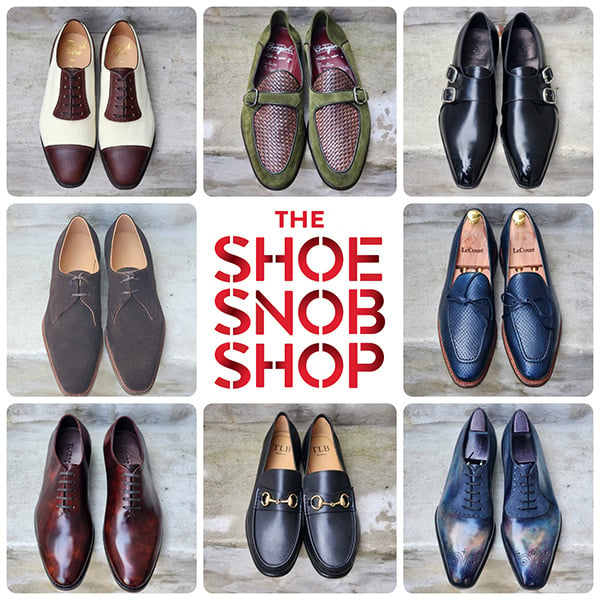

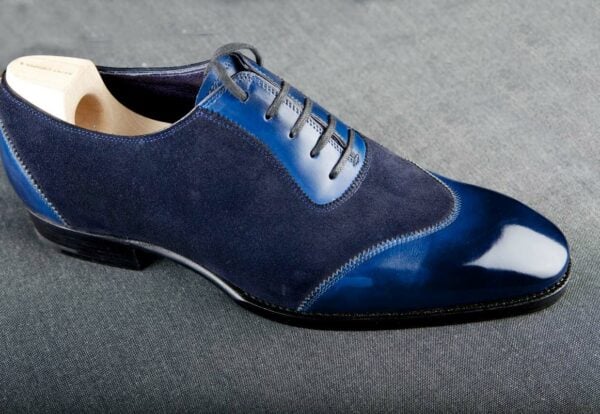
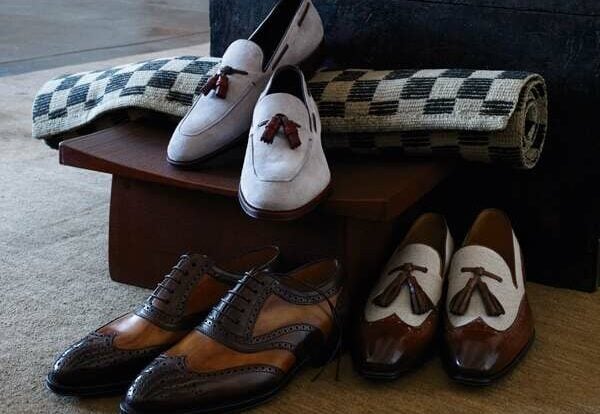

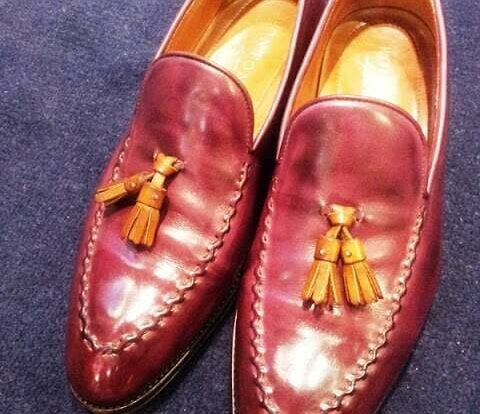
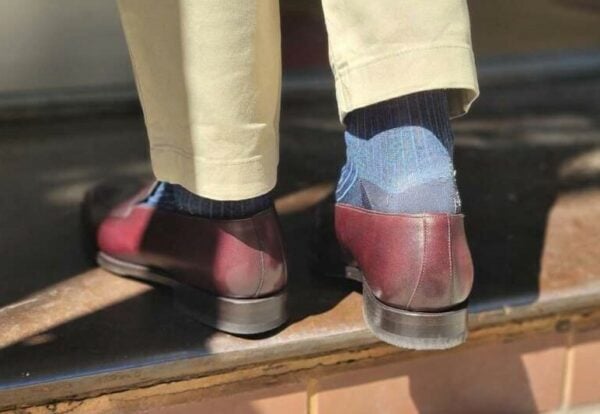
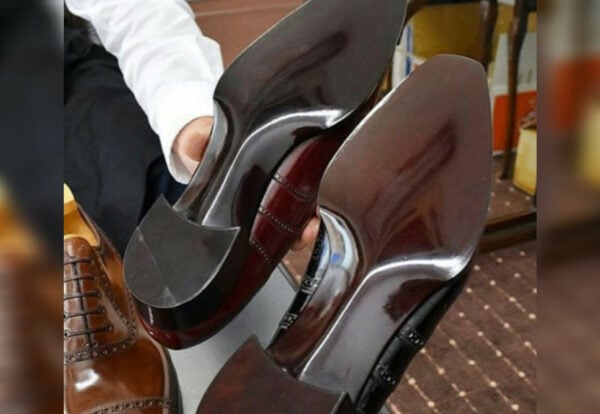
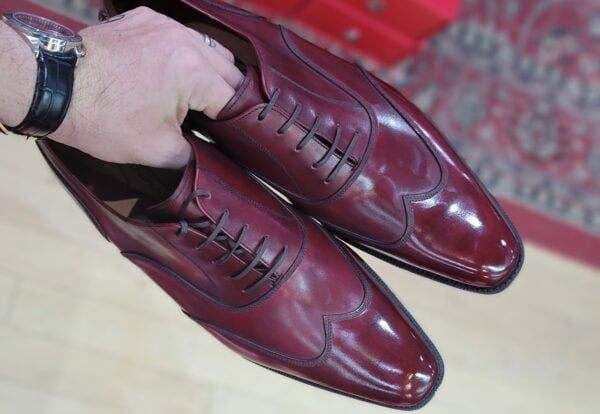
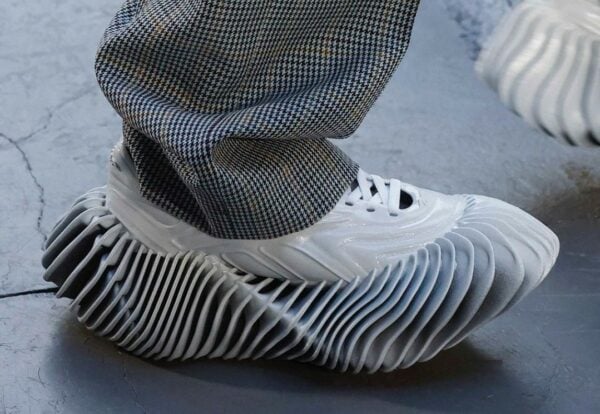
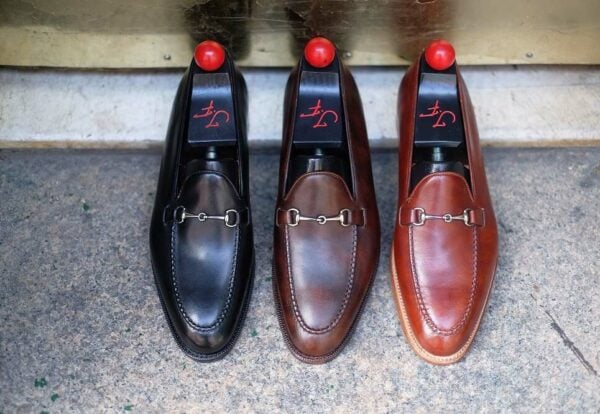
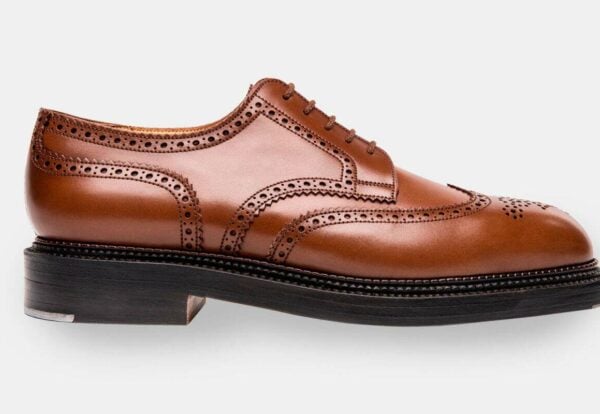
if you polish your shoes and use conditioner and wear them not more than once a week use shoe trees and dont wear them in wet weather they’ll last around 35 years with about three sole changes maybe three. If you do all that then you cant really wear them out.The type of shoe we are talking here ia like a loake or herring, stuff from asus will last much less.use shoe trees of cherry wood unpolished. the worst enemy is rain. wear old shoes in rain with rubber soles
Hi Justin, first of all congrats , awesome Blog and great post! I am big fan of shoes but particularly suede shoes, yes I know suede is pretty delicate, but I love the look, texture, the matte shine, touch and feeling. Id like to know from your experince and point of view, any advice to get them a good ageing process, like any top quality shoe I think Suede can get some beautiful shades and tones throuh the years. Id like also to know if you have the time to answer two more things: First the difference between Suede and Nubuck in terms of quality, price and making process , I know one is from the outsider part of the skin and the other from the inside, and Nubuck looks softer but more delicate, but besides that I d like to know your view, and second, recently I�ve got a pair of Crockett and Jones with open channel, I have read that the kind of soles that is using C&j in the bench made shoes is not from Rendenbach, while other Brands in the same range of prices are using them, is this something to worry about?, or C&J soles are as good as Rendenbach�s. Thanks a lot and sorry if I asked to many things! I also invite you and your Readers to visit my Blog about lifestyle thefetishizez.com .
Pijoaparte.
Justine,
Can you talk about the Bontoni and Di Bianco shoes. Not only style, but structure. My understanding is that Bontoni is using a combination of Welt and Blake.
BTW IMHO Bontoni make gorgeous shoes.
Ike
Hi Justin,
Many thanks for having taken time to write this post. This issue is indeed really worth considering on a blog as yours dedicated to men’s footwear. If from time to time you could intersperse your posts aimed at exhibiting great shoes with these kinds of information that are more useful to shoemakers’ customers, be sure, you would do a very great job!
Now, having that, I also have a question, though related to the use of shoetrees. Are they necessary just for the two following days they are not worn, or should they remain in the shoes necessarily as long as they are not worn? Honestly, I am really more than confused by the varieties of opinions held on this deceptively simple question. Nb: you could browse through magazines and blogs and see yourself what you would come up with! So what is your take on it?
Thanks in advance for your reply.
@Superchick
The best shoetrees are the red cedarwood, not polished ones.
They suck in the moistness (while plastic ones BLOCK the evaporation process), they smell greatly (something that cherrywood lacks, at least for my nose) and they never become old. When they don’t smell anymore, you need just a piece of (fine!) sandpaper to make them new again.
TheFetishizez – Well, I have to say that you ask some tough ones. The only way that I know how to age suede is through wear.
For your question about suede vs nubuck read here:
http://www.askandyaboutclothes.com/forum/showthread.php?89381-What-is-the-difference-between-suede-and-buck
Can’t really say that I am an expert in how it is created, but I can say that from my point of view, nubuck is more of a liability, as it is easy to stain. And once you stain it, it’s hard to clean. Thats why I prefer suede. The longer hairs make it easier for dirt to hide in it and not stain it. I would not say that it is softer. Suede shoes are pretty darn soft themselves. The quality will just be up to the quality of the leather, can’t really say one is higher than the other, just depends on the tannery really.
I don’t know where C&J source their soles from, but I do know that they are very durable, so it’s nothing to worry about. I know other high end makers who also do not source their soles from Rendenbach, and whose soles are tough as hell. I honestly don’t think that any other shoes in the same range of prices are better quality than C&J.
Ike – Can’t really say much about Di Bianco, as I have never really seen them in person, but from their price point, I would only hope that they are goodyear welted. But to be honest, it would not surprise me if they have very nice leather, but are blake stitched. That would be my guess. As far as Bontoni goes, I have only seen them in goodyear welt, never in blake stitch, but that does not mean that they don’t exist. I can tell you that every time I ever held a Bontoni, I felt as if I was holding a rock, but in a good way. They do make a good, and yes lovely, shoe!
Anon – My take is to always have them in. Whether or not it is absolutely necessary, that just depends on how you view taking care of your shoes. What I like about shoetrees aside from their moisture absorbing qualities is that they keep the shoe stretched to it’s original state. If you don’t keep shoetrees in, your shoes will look all bent, with the toe sticking up in the air from the way that we walk on them. Let’s just put it like this, before I moved to Europe I had a shoetree for every leather soled shoe that I owned (about 40).
-Justin
Hi Justin, thanks a lot ! The link is good, I ll keep following the shoe snob!
Regards from Spain
The Fetishizez – Glad that you liked it. Thanks!
-Justin
Hi – this’s a great blog! I have a question, I have a pair of new unworn suede Edward Green shoes that I have stored away for a year or so with shoe trees inserted in them. Is this bad for the shoes in any way? I mean, are the shoe trees likely to damage the leather by drying the shoes out? I have done more or less the same for a pair of leather Churchs too. Your advice is very much appreciated.
hi, I like this blog, but want to sequence and process of open channel leather unit sole.which machines are uses in the process.
I repair shoes & it amazes me how many people do not think about what they are saying! I get asked all the time if I gave them repaired how long will they last. I say to them often with shock that I asked them how much do you weigh? What angle does your shoe touch the floor when you put your foot down,how many pounds of pressure per square inch are you producing when walking,how many steps are you walking,what material are you walking on,etc etc I mean come on how on earth are we suppose to apply all of these factors and many more to give you an accurate prediction,I am not friggin einstein could you come up with a formula to solve this equation, no I thought not lol
Hello Justin,
I recently visited Mario Bemer in Florence, and asked about the longevity of his unique rubber-injected soles. I asked how these would do in a place where it rains often, when the pavement is wet, as I live in such a place. The salesman told me it wouldn’t be much of a problem, but I am wondering if you have any further thoughts? For most of my leather-soled shoes, I have had the top part of the sole replaced by rubber, so there is no leather part of the sole which makes contact with the (wet) pavement. If you have a chance, can you please reply with your thoughts on his rubber-injected soles especially as it relates to those of us who live in places where the pavement is often wet? Thank you
In reality from what I remember of those soles, is that the amount of rubber they have is mainly for grip and won’t truly protect from a super wet place
Squeaking shoes are the worst. Whatever shoe you buy! I bought a pair of Herring suede boots and they squeaked after 6 months. I complained but never got a reply. Now they are dumped, sorry to Say.